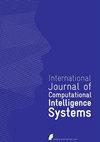基于增强的机器学习算法在物联网网络入侵检测中的比较研究
IF 2.9
4区 计算机科学
International Journal of Computational Intelligence Systems
Pub Date : 2023-11-09
DOI:10.1007/s44196-023-00355-x
引用次数: 1
摘要
物联网(IoT)环境通过实现无缝连接和自动化,彻底改变了生活质量。然而,物联网的广泛采用也给制造商和消费者带来了重大的安全挑战。利用机器学习技术检测物联网网络中的网络入侵显示出巨大的潜力。然而,为入侵检测选择合适的机器学习算法是一个相当大的挑战。算法选择不当会降低检测精度,增加网络感染风险,危及网络安全。本文对用于检测物联网入侵的六种最先进的基于增强的算法进行了比较评估。方法概述包括对多类分类中选择的基于提升的算法的性能进行基准测试。评估包括综合分类性能分析,包括准确性、精密度、检出率、F1分数,以及时间性能分析,包括训练和测试时间。本文章由计算机程序翻译,如有差异,请以英文原文为准。
A Comparative Study of Using Boosting-Based Machine Learning Algorithms for IoT Network Intrusion Detection
Abstract The Internet-of-Things (IoT) environment has revolutionized the quality of living standards by enabling seamless connectivity and automation. However, the widespread adoption of IoT has also brought forth significant security challenges for manufacturers and consumers alike. Detecting network intrusions in IoT networks using machine learning techniques shows promising potential. However, selecting an appropriate machine learning algorithm for intrusion detection poses a considerable challenge. Improper algorithm selection can lead to reduced detection accuracy, increased risk of network infection, and compromised network security. This article provides a comparative evaluation to six state-of-the-art boosting-based algorithms for detecting intrusions in IoT. The methodology overview involves benchmarking the performance of the selected boosting-based algorithms in multi-class classification. The evaluation includes a comprehensive classification performance analysis includes accuracy, precision, detection rate, F1 score, as well as a temporal performance analysis includes training and testing times.
求助全文
通过发布文献求助,成功后即可免费获取论文全文。
去求助
来源期刊

International Journal of Computational Intelligence Systems
工程技术-计算机:跨学科应用
自引率
3.40%
发文量
94
期刊介绍:
The International Journal of Computational Intelligence Systems publishes original research on all aspects of applied computational intelligence, especially targeting papers demonstrating the use of techniques and methods originating from computational intelligence theory. The core theories of computational intelligence are fuzzy logic, neural networks, evolutionary computation and probabilistic reasoning. The journal publishes only articles related to the use of computational intelligence and broadly covers the following topics:
-Autonomous reasoning-
Bio-informatics-
Cloud computing-
Condition monitoring-
Data science-
Data mining-
Data visualization-
Decision support systems-
Fault diagnosis-
Intelligent information retrieval-
Human-machine interaction and interfaces-
Image processing-
Internet and networks-
Noise analysis-
Pattern recognition-
Prediction systems-
Power (nuclear) safety systems-
Process and system control-
Real-time systems-
Risk analysis and safety-related issues-
Robotics-
Signal and image processing-
IoT and smart environments-
Systems integration-
System control-
System modelling and optimization-
Telecommunications-
Time series prediction-
Warning systems-
Virtual reality-
Web intelligence-
Deep learning
 求助内容:
求助内容: 应助结果提醒方式:
应助结果提醒方式:


